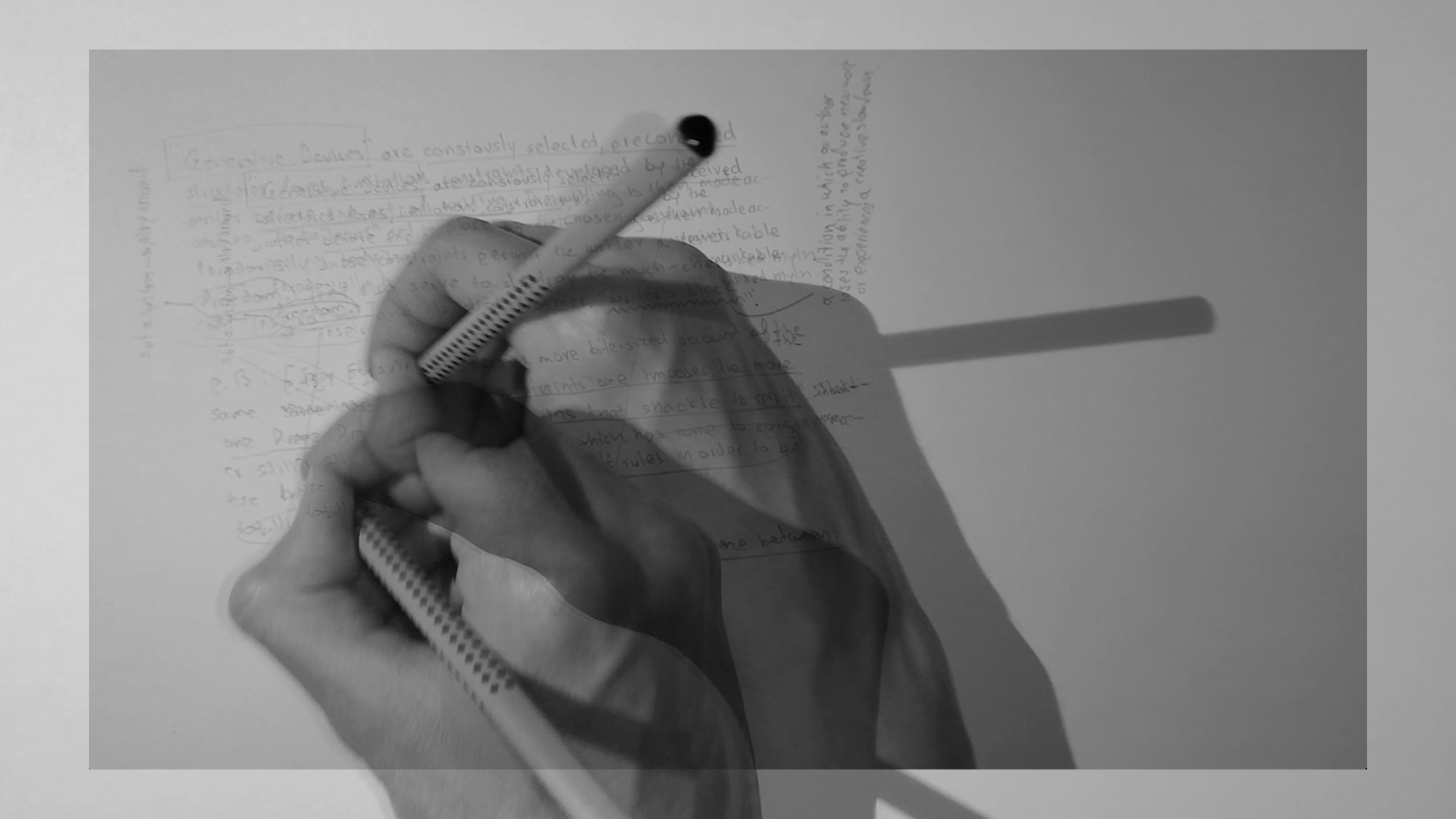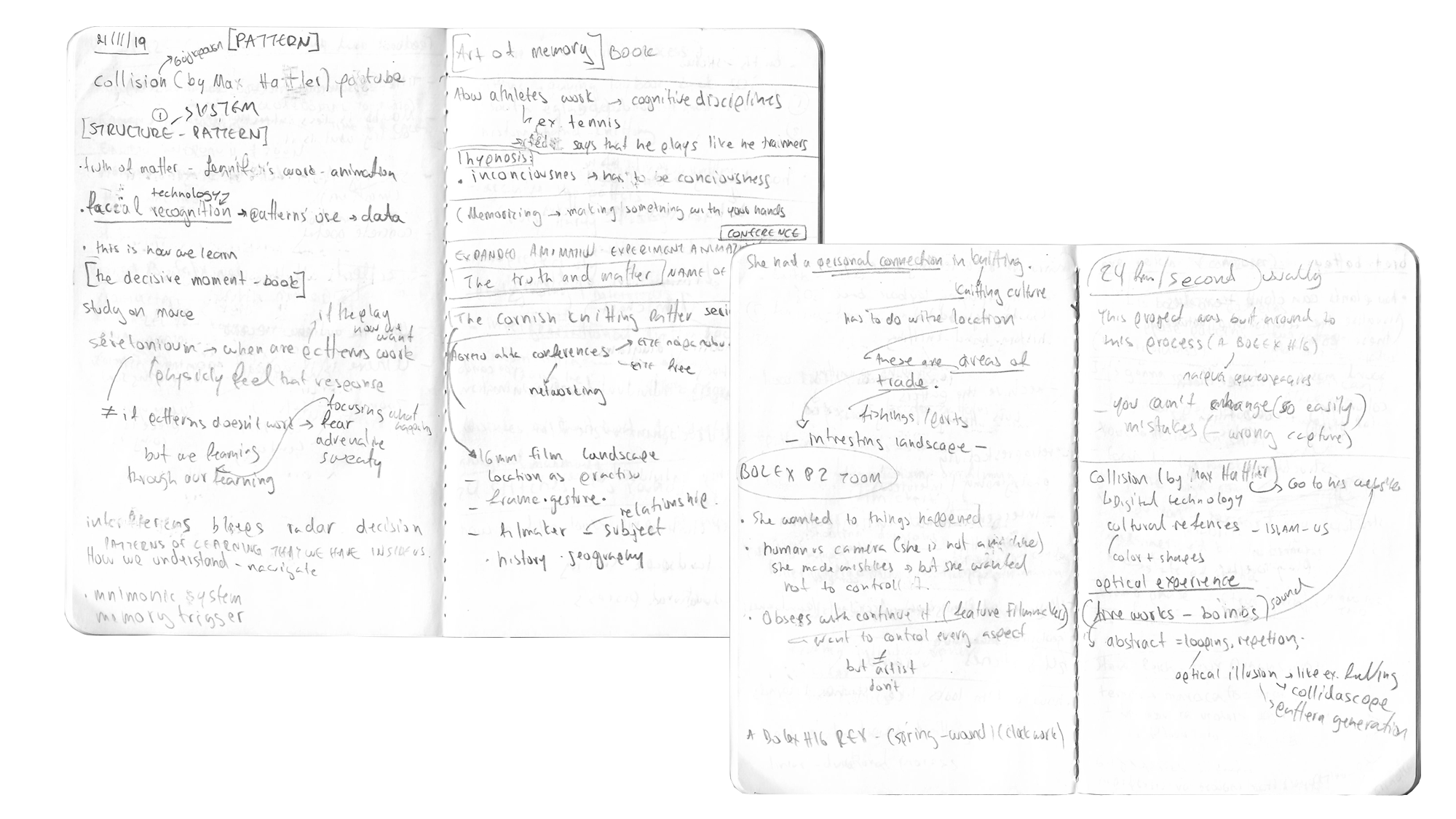
Since my first MA year in RCA in Visual Communication, I have been trying to approach language by exploring different communication systems. Through my research, I encountered fragments of various art movements that have focused on manipulating language, and Asemic writing captured my attention. The fact that it looks like writing, but the semantic value of its "words/marks" is abandoned, raised questions around semiotics and the relationship between the author and the reader.
Experiment 1:
Asemic Notations
Through an exploration of asemic writing -including primary research and study of artists using this medium- I focused my research on questioning whether language -a communication system- can be reapproached from different perspectives and whether signs could be interpreted differently. Thus, I was trying to push myself to experiment with this concept. The symbols in my notebook drew my attention. I decided to take a tracing paper and copy all the marks except the letters (alphabet) with a pencil. It was exciting to see this page again. It looked like a map. Specifically, the notations looked like traffic signs and highways that direct you 'to turn left...then right...to stop...pay attention' and other actions. You could see a constant movement. Then, I traced more pages; it was a different narrative; it had a different tempo from the previous one as well as the next one. In that particular way, I started realising through these signs a different perspective of language. I was "observing" the movements of my thoughts. How one idea leads to the next one, and how those ideas generate other subcategories of ideas etc. The absence of words created an interesting space, where you could "stand" for a while before meeting the next sign that will navigate you to a different route.



Experiment 2:
Getting lost with a map
I returned to my notation marks, and I re-challenged the idea of the map. I asked myself, 'What if these notations become a real map and guide people through space?'. And since the relationship between the author and the reader was a subject that concerned me, I thought it could be an interesting case to share my asemic map with another person that could place their own context. I was curious to see the reader's journey while making their own links in a place where they will situate himself.
Since walking was the only thing that people could do during the lockdown(due to Covid-19), I had the chance to take long walks with my friends to see them and have a conversation with them. I found it quite interesting that walking and talking share similar patterns, and these two actions influenced each other. Internal and external factors shape the conversations along the journey.
Bringing together these two ideas, 'asemic maps' and 'walking as a communicating process', I asked two friends to try to navigate themselves in Victoria Park in London. My instructions were to try together to interpret the map as they want and document the process with a GoPro camera.
The audio/visual outcome that I received gave some interesting points for further examination:
As a response to this experiment, I made a visual essay in dialogue with the performative experiment. The audience will witness my thoughts and questions explored in my research practice and the participant's journey.
Since walking was the only thing that people could do during the lockdown(due to Covid-19), I had the chance to take long walks with my friends to see them and have a conversation with them. I found it quite interesting that walking and talking share similar patterns, and these two actions influenced each other. Internal and external factors shape the conversations along the journey.
Bringing together these two ideas, 'asemic maps' and 'walking as a communicating process', I asked two friends to try to navigate themselves in Victoria Park in London. My instructions were to try together to interpret the map as they want and document the process with a GoPro camera.
The audio/visual outcome that I received gave some interesting points for further examination:
- The links that they made between the map and the place.
- The constant adaptation of their perspectives to read the signs.
- But most importantly, the ping pong conversations that they had to build their pathways. They both told me that it was a key element that they had each other in this journey since each of them brought their insights every time they got stuck.
As a response to this experiment, I made a visual essay in dialogue with the performative experiment. The audience will witness my thoughts and questions explored in my research practice and the participant's journey.